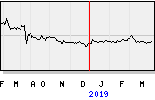
Identification of new therapeutic approaches and diagnostic tools
Leiden, The Netherlands, January 31, 2007. Biotech company Pharming Group NV ("Pharming" or "the Company") (Euronext: PHARM) announced today that its wholly owned subsidiary DNage has been granted two SenterNovem subsidies totalling just over €1 million, over a period of three years, to develop products in the field of osteoporosis.
The granting of these subsidies exemplifies Pharming's strategy to expand its research engine and to strengthen its product pipeline. Several early stage programs have already been initiated at Pharming/DNage and partnered with academic institutions and biotech companies. The Company has started to finance these programs through national and European subsidy programs.
Under a so-called International Innovation Subsidy, DNage will use its unique animal models (for aging diseases) and work with an international consortium of academic institutions and biotech companies to identify new targets (to which therapeutic products can be targeted) and therapies in the field of osteoporosis. Moreover, the study will focus on the identification of new diagnostic tools that can identify the disease at an early stage (biomarkers) to facilitate early diagnosis.
In addition, a "Feasibility" subsidy was granted that will allow the Company, in collaboration with the Erasmus Medical Center in Rotterdam, to establish the role of lactoferrin in bone formation and explore a business and clinical development strategy to develop lactoferrin as a new product in the field of bone diseases such as osteoporosis. Lactoferrin is one of Pharming's current products under development.
Osteoporosis is a skeletal disorder characterized by weakened bones leading to increased risk of fractures and disability. It is estimated that every one in three women and one in eight men over the age of fifty will develop osteoporosis and that more than 75% of osteoporosis patients are diagnosed very late or not at all. There is currently no cure for osteoporosis, although several treatments may slow down its progress. Bisphosphonates are the most commonly prescribed class of drugs for the treatment of osteoporosis with a market size of € 7 billion and growing rapidly. However, poor adherence to current therapy and the lack of early diagnosis present key market opportunities. There is a strong medical need for new products (using new therapeutic targets) and new biomarkers.
